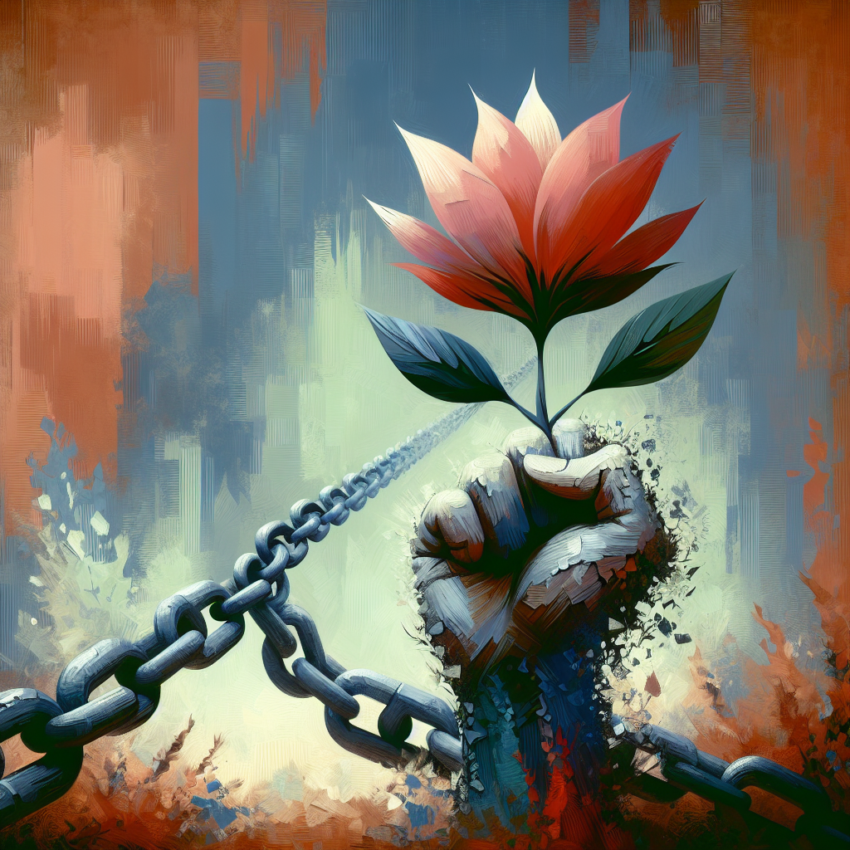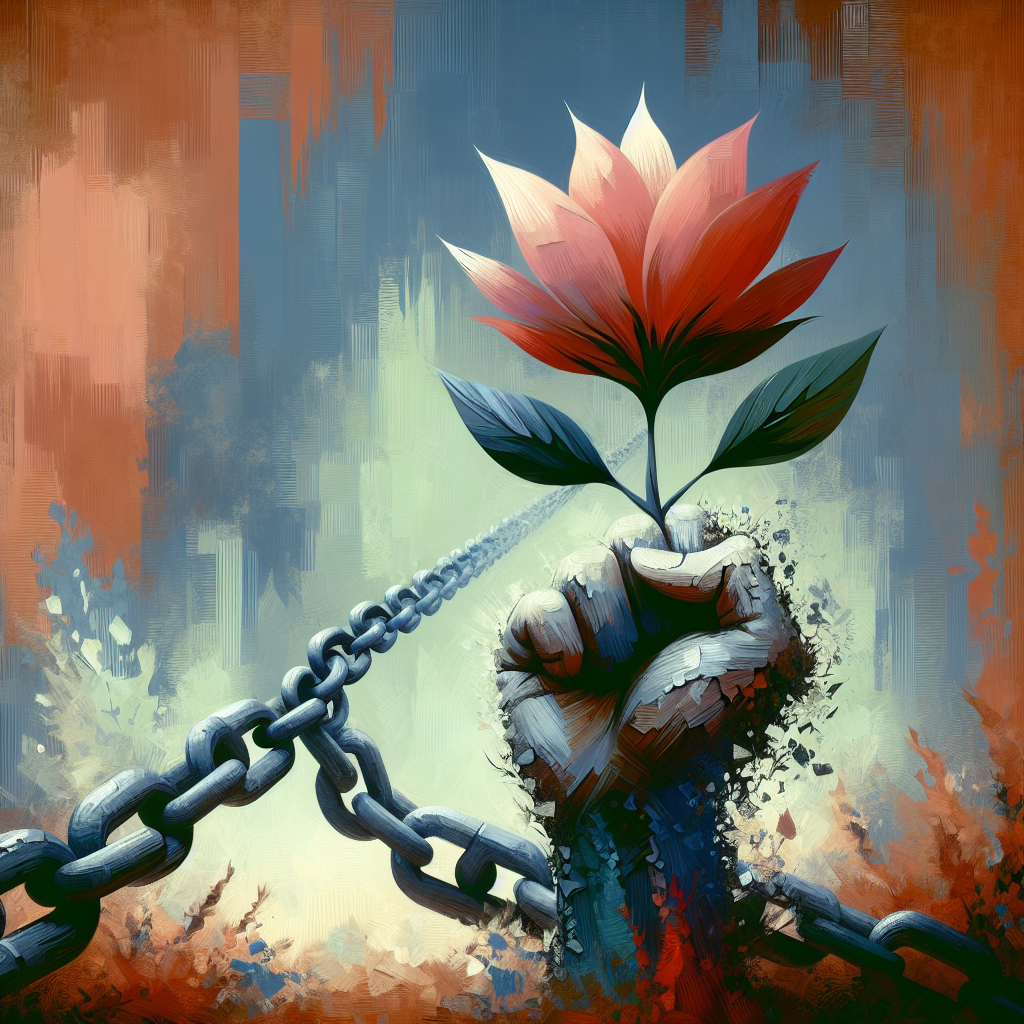Managing Chronic Pain: Strategies For A Pain-Free Life

Are you tired of living with chronic pain? Look no further! In this article, we will share effective strategies that can help you lead a pain-free life. From alternative therapies to lifestyle changes, we will explore various approaches that can provide relief and improve your overall well-being. Say goodbye to constant discomfort and discover the keys to managing chronic pain effectively.
Understanding Chronic Pain
Chronic pain is defined as persistent pain that lasts for more than three to six months. Unlike acute pain, which is a normal sensation that alerts us to possible injury, chronic pain continues long after the initial injury or illness has healed. It can affect various parts of the body, such as the back, joints, muscles, or nerves. Chronic pain is not just a physical sensation; it can also impact emotional well-being and overall quality of life.
Causes and Types of Chronic Pain
Chronic pain can have various causes, including underlying medical conditions, injuries, or damage to nerves. Common causes of chronic pain include arthritis, fibromyalgia, migraines, neuropathy, and back injuries. It is important to note that each individual’s experience of chronic pain is unique, and the type and severity of pain can vary significantly from person to person.
Impact of Chronic Pain on Daily Life
Living with chronic pain can have a profound impact on daily life. The constant presence of pain can make routine activities challenging and exhausting. It can interfere with work, household chores, social interactions, and even simple tasks such as getting dressed or cooking a meal. Chronic pain can also disrupt sleep patterns, leading to fatigue and further exacerbating pain symptoms. It is crucial to address chronic pain and develop effective strategies to manage its impact on daily life.
Building a Support Team
Having a support team is crucial when dealing with chronic pain. It includes healthcare professionals, as well as emotional and social support from family, friends, and support groups. A support team can provide guidance, empathy, and encouragement, which are essential for coping with chronic pain effectively.
Importance of a Support Team
A support team can play a vital role in helping you navigate the complexities of chronic pain. They can provide valuable information about treatment options, connect you with specialists, and offer emotional support during challenging times. Having a support team ensures that you are not facing chronic pain alone and helps create a sense of community and understanding.
Choosing the Right Healthcare Professionals
When building your support team, it is crucial to choose the right healthcare professionals who specialize in chronic pain management. Seek out doctors, physical therapists, and other specialists with experience in treating chronic pain. Look for professionals who approach pain management holistically and collaborate with you to develop an individualized treatment plan.
Finding Emotional and Social Support
Alongside medical professionals, emotional and social support are vital components of managing chronic pain. Reach out to family, friends, or support groups who can understand and empathize with your experience. Sharing your journey with others who have similar challenges can provide a sense of validation and solidarity. Online communities and forums can also be valuable sources of support and information.
Developing a Treatment Plan
A treatment plan is a comprehensive approach to manage chronic pain effectively. It involves a combination of medical interventions, alternative therapies, lifestyle modifications, and behavioral strategies tailored to your specific needs.
Medical Interventions vs. Alternative Therapies
Medical interventions for chronic pain may include prescription medications, injections, or surgical procedures. Alternative therapies can encompass a wide range of approaches such as acupuncture, massage therapy, chiropractic care, and mind-body techniques like meditation or yoga. It is essential to work closely with your healthcare provider to determine the most appropriate combination of interventions for your unique situation.
Exploring Different Treatment Options
Since chronic pain can have multiple causes and manifestations, it may be necessary to explore various treatment options to find the most effective approach. This could involve trying different medications, attending therapy sessions, and experimenting with alternative therapies. Keeping an open mind and being willing to explore different avenues can help you discover what works best for alleviating your pain.
Creating an Individualized Plan with Your Healthcare Provider
Each individual’s experience of chronic pain is unique, which is why it is crucial to work with your healthcare provider to develop an individualized treatment plan. Your healthcare provider will consider your specific pain symptoms, medical history, lifestyle, and personal goals to create a plan tailored to your needs. Regular communication and feedback with your healthcare provider are key to adjusting and refining the plan as necessary.

Lifestyle Modifications
In addition to medical interventions and therapies, making lifestyle modifications can play a significant role in managing chronic pain and improving overall well-being.
Exercise and Physical Activity for Pain Management
Regular exercise and physical activity can help reduce pain levels and improve overall functioning. Low-impact activities such as walking, swimming, or cycling can promote flexibility, strengthen muscles, and release natural endorphins, which act as pain relievers. It is important to start slowly, listen to your body, and work with a physical therapist to develop an exercise routine tailored to your abilities and limitations.
Maintaining a Healthy Diet and Weight
Eating a well-balanced diet can contribute to overall health and well-being, including managing chronic pain. Certain foods, such as those rich in omega-3 fatty acids or antioxidants, may have anti-inflammatory properties that can help alleviate pain. Additionally, maintaining a healthy weight can reduce the strain on joints and minimize pain symptoms.
Incorporating Relaxation Techniques into Daily Routine
Relaxation techniques, such as deep breathing exercises, progressive muscle relaxation, or guided imagery, can help reduce stress and promote relaxation, ultimately easing chronic pain symptoms. Experiment with different techniques to find the ones that work best for you and integrate them into your daily routine.
Cognitive and Behavioral Strategies
Cognitive and behavioral strategies focus on the mind-body connection and the role of thoughts and behaviors in managing chronic pain.
Understanding the Mind-Body Connection
The mind-body connection emphasizes the impact our thoughts and emotions can have on physical sensations, including pain. By understanding this connection, you can explore how thoughts and emotions contribute to pain and develop strategies to modify them.
Managing Stress and Anxiety
Stress and anxiety can significantly worsen chronic pain symptoms. Learning effective stress management techniques, such as deep breathing exercises, meditation, or engaging in enjoyable activities, can help reduce pain levels and improve overall well-being.
The Role of Positive Thinking and Gratitude
Positive thinking and cultivating gratitude can help shift focus away from pain, reduce stress, and enhance overall emotional well-being. By consciously practicing positive thinking and expressing gratitude for the small things in life, you can foster a more positive outlook and cope better with the challenges of chronic pain.
Pain Medications and Their Risks
Pain medications can play a crucial role in managing chronic pain, but it is important to be aware of their potential risks and side effects.
Common Medications for Chronic Pain
There are various medications available to manage chronic pain, including nonsteroidal anti-inflammatory drugs (NSAIDs), opioids, antidepressants, anticonvulsants, and muscle relaxants. Each medication has its specific uses, benefits, and potential side effects. It is important to work closely with your healthcare provider to find the most suitable medication and dosage for your individual needs.
Understanding the Potential Risks and Side Effects
Pain medications, particularly opioids, can carry risks of dependency, tolerance, and other side effects. It is essential to have open and honest communication with your healthcare provider about any concerns or potential risks associated with pain medication use. Regular monitoring and follow-up appointments are crucial to ensure the safe and effective management of chronic pain.

Balancing Pain Relief with Minimizing Dependency
When using pain medications, striking a delicate balance is necessary to achieve pain relief while minimizing dependency. This involves working with your healthcare provider to find the lowest effective dose, exploring other non-medication strategies, and closely monitoring medication use to prevent potential risks.
Integrating Complementary Therapies
Complementary therapies, alongside conventional medical treatments, can offer additional pain relief and overall well-being.
Acupuncture and Acupressure
Acupuncture and acupressure are ancient Chinese therapies that involve stimulating specific points on the body to promote pain relief and overall balance. These therapies are believed to activate the body’s natural healing response and can be beneficial for managing chronic pain.
Massage Therapy and Chiropractic Care
Massage therapy and chiropractic care focus on manipulating the body’s soft tissues and spine to relieve pain and improve overall function. These therapies can help reduce muscle tension, alleviate pain symptoms, and improve range of motion.
Mind-Body Techniques Such as Meditation and Yoga
Mind-body techniques, including meditation and yoga, emphasize the connection between the mind and body in managing chronic pain. They promote relaxation, reduce stress, and increase body awareness, ultimately helping to alleviate pain symptoms. Experiment with different techniques to find the ones that resonate with you and incorporate them into your self-care routine.
Managing Sleep Disturbances
Chronic pain and sleep disturbances often go hand in hand. Addressing sleep issues is crucial for effective pain management.
The Connection Between Chronic Pain and Sleep
Chronic pain can disrupt sleep patterns, leading to insomnia, frequent wakefulness, or difficulty falling asleep. In turn, inadequate sleep can exacerbate pain symptoms, creating a vicious cycle. Understanding the connection between chronic pain and sleep is essential for finding strategies to improve both aspects.
Establishing a Healthy Sleep Routine
Establishing a consistent sleep routine can help regulate the sleep-wake cycle and promote better sleep quality. Set a regular bedtime and wake-up time, create a relaxing bedtime routine, and ensure a comfortable sleep environment that is conducive to restful sleep.
Addressing Sleep Disorders and Seeking Professional Help
If sleep disturbances persist despite implementing a healthy sleep routine, it may be necessary to investigate underlying sleep disorders and seek professional help. Consult with a healthcare provider or sleep specialist to diagnose and address any sleep disorders to improve sleep quality and subsequently manage chronic pain more effectively.
Coping with Emotional Impact
Chronic pain can take a toll on emotional well-being, leading to feelings of depression and anxiety. Coping with the emotional impact is an essential aspect of managing chronic pain effectively.
Dealing with Depression and Anxiety
Living with chronic pain can contribute to the development of depression and anxiety. It is essential to recognize and address these emotional challenges to prevent further deterioration of mental health. Seeking support from mental health professionals, engaging in therapy or counseling, and exploring potential medications can be beneficial in managing depression and anxiety alongside chronic pain.
Seeking Therapy and Counseling
Therapy and counseling can provide a safe space to talk about the emotional challenges faced due to chronic pain. Cognitive-behavioral therapy (CBT) can help identify and modify negative thought patterns, develop coping strategies, and improve overall emotional well-being.
Engaging in Hobbies and Activities for Emotional Well-being
Engaging in hobbies and activities that bring joy and fulfillment can significantly contribute to emotional well-being. Find activities that you enjoy and that do not worsen pain symptoms. Whether it is painting, gardening, reading, or spending time with loved ones, integrating meaningful activities into your daily routine can boost mood and provide a welcome distraction from chronic pain.
Maintaining a Positive Outlook
Maintaining a positive outlook is crucial when living with chronic pain. It can help foster resilience and provide motivation to persevere on the journey to managing pain effectively.
Developing Resilience and Optimism
Resilience is the ability to bounce back and adapt in the face of adversity. Cultivating resilience can help navigate the challenges of chronic pain and face setbacks with a positive mindset. Optimism, or a positive outlook, involves focusing on the good things in life and believing in the potential for a better future, despite chronic pain. Both resilience and optimism can be nurtured through self-reflection, seeking support, and adopting a growth mindset.
Setting Realistic Goals and Expectations
When managing chronic pain, setting realistic goals and expectations is crucial. Understand that there might be good and bad days, and progress may occur gradually. Setting achievable goals, both short-term and long-term, can provide a sense of accomplishment and keep you motivated on your pain management journey.
Focusing on Self-Care and Self-Compassion
Self-care and self-compassion are essential elements of managing chronic pain effectively. This involves prioritizing your physical and mental well-being, practicing self-care activities such as relaxation techniques or engaging in activities that bring you joy, and treating yourself with kindness and understanding. Remember that your well-being matters, and taking care of yourself is not selfish but necessary for managing chronic pain and leading a pain-free life.
In conclusion, understanding chronic pain is the first step towards effectively managing its impact on your life. Building a support team, developing a treatment plan, making lifestyle modifications, and integrating complementary therapies can all contribute to better pain management. Furthermore, employing cognitive and behavioral strategies, being knowledgeable about pain medications and their risks, and addressing sleep disturbances and emotional impact are essential aspects of comprehensive chronic pain management. By maintaining a positive outlook, practicing self-care, and setting realistic goals, it is possible to navigate the challenges of chronic pain and lead a pain-free life. Remember, you are not alone, and with the right strategies and support, there is hope for managing chronic pain and improving your overall well-being.



Leave a Reply